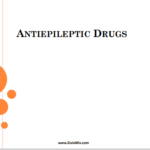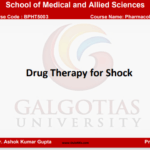Liposomal Gene Therapy: A Microscopic Delivery System for Big Dreams
Gene therapy, the idea of treating diseases by introducing healthy genes into cells, has the potential to revolutionize medicine. But delivering those genes safely and effectively has been a major challenge. Enter liposomes, microscopic spheres with a surprising ability to carry genetic cargo into cells. This blog dives into the fascinating world of liposomal gene therapy, exploring its potential, challenges, and exciting future.
What are Liposomes?
Imagine tiny bubbles made up of fat molecules, similar to the phospholipids in our cell membranes. These are liposomes, biocompatible and biodegradable spheres that can be customized to carry various molecules. In gene therapy, they become microscopic Trojan horses, encapsulating DNA or RNA and delivering them to specific cells.
Why Liposomes?
The body’s defenses are formidable, and naked genetic material wouldn’t survive long enough to reach its target. Liposomes offer several advantages:
- Protection: They shield the delicate genetic material from enzymes and immune attacks.
- Targeting: Tailoring liposomes with specific molecules can help them reach specific cell types.
- Versatility: Liposomes can be loaded with various genetic materials, including genes, siRNA, and CRISPR components.
- Safety: They are generally well-tolerated, with ongoing research improving their safety profile.
Applications:
Liposomal gene therapy holds immense promise for treating a wide range of diseases:
- Genetic disorders: Replacing faulty genes with healthy versions could treat cystic fibrosis, hemophilia, and Tay-Sachs disease.
- Cancer: Delivering genes that trigger the immune system to attack cancer cells or introducing genes that suppress tumor growth.
- Infectious diseases: Liposomes can carry vaccines or antiviral agents directly to infected cells.
- Neurological disorders: Delivering genes to brain cells could treat Parkinson’s disease, Alzheimer’s disease, and stroke.
Challenges and Future:
Despite its potential, liposomal gene therapy still faces hurdles:
- Delivery efficiency: Optimizing delivery to specific cells and ensuring enough genetic material enters the cells remains a challenge.
- Manufacturing: Scaling up production for widespread use requires efficient and cost-effective methods.
- Long-term effects: More research is needed to understand the long-term safety and efficacy of this therapy.
Looking Forward:
Liposomal gene therapy is rapidly evolving, with ongoing research addressing its challenges. With advancements in targeting, manufacturing, and understanding how genes function, this technology has the potential to transform medicine and offer hope for millions of patients.
Remember: This blog is for informational purposes only and should not be taken as medical advice. Always consult with a healthcare professional for diagnosis and treatment.
I hope this blog has sparked your interest in liposomal gene therapy. This exciting field is poised to make significant contributions to healthcare in the years to come.










